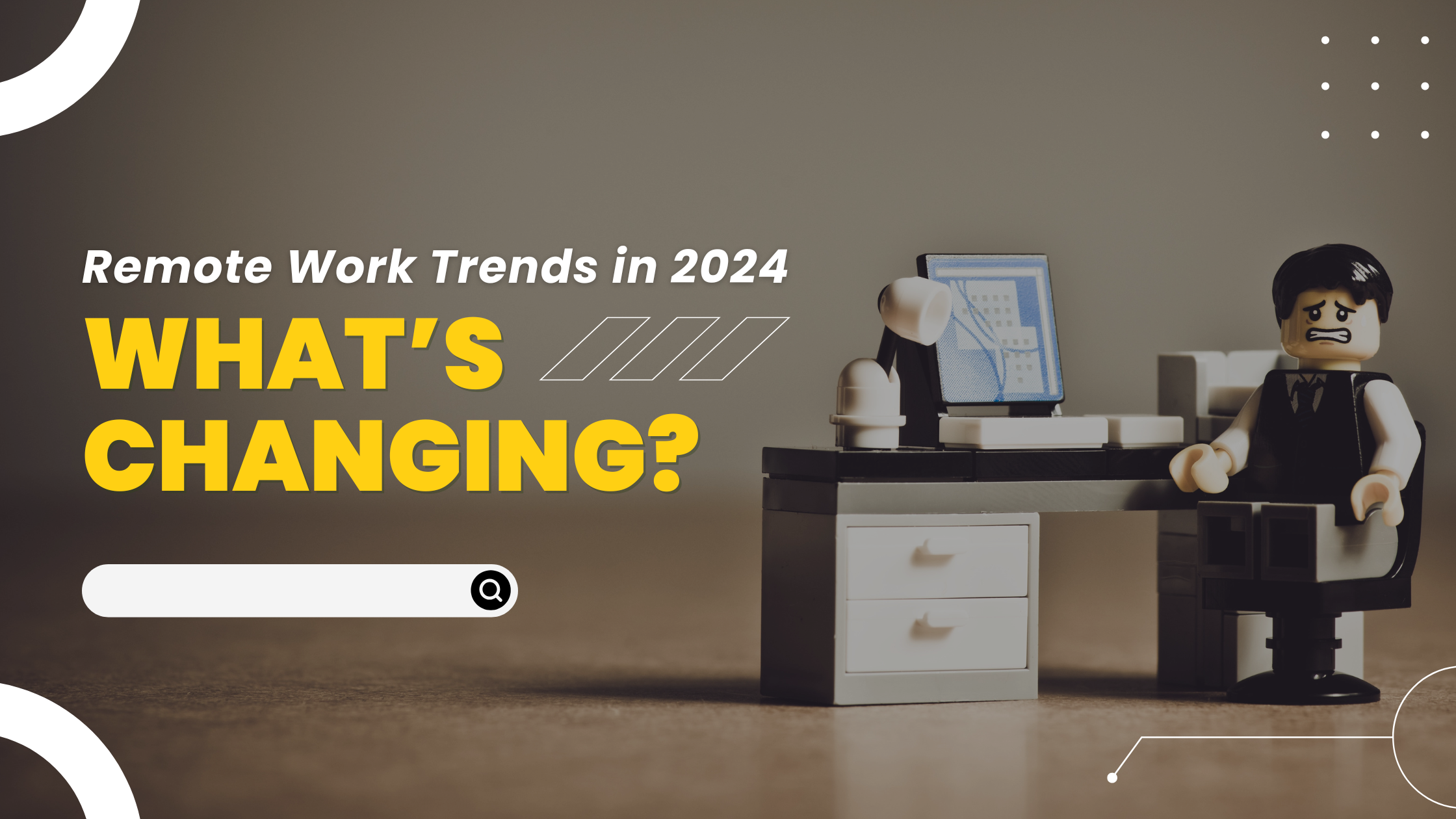In 2024, remote work is no longer just a trend—it’s the backbone of freelancing. A 2023 Buffer report reveals 98% of freelancers want to work remote work trends indefinitely, and businesses are adapting fast. From AI-driven collaboration tools to hybrid gigs blending virtual and in-person tasks, freelance remote work trends 2024 are redefining flexibility, productivity, and global opportunities.
“Remote work isn’t a perk anymore—it’s the foundation of the freelance economy.” – Darren Murph, Remote Work Expert
This article breaks down the top trends, tools, and strategies freelancers need to thrive in this evolving landscape.
Why Remote Work Trends Matter for Freelancers
Remote work is evolving beyond Zoom calls and Slack channels. Key shifts include:
Hybrid Freelance Roles: Clients now mix remote tasks with on-site workshops or installations.
AI-Powered Productivity: Tools like Otter.ai (transcription) and Motion (AI scheduling) save 10+ hours weekly.
Borderless Teams: Startups hire freelancers from 5+ countries for round-the-clock workflows.
For example, a freelance project manager in Brazil coordinates remote work trends developers in India and designers in Poland for a U.S. client—all via platforms like Virtual Assistant Firms.
Top 2024 Freelance Remote Work Trends
1. Hybrid Freelance Gigs
Demand: Roles requiring occasional on-site presence (e.g., tech setup, training).
Pay Premium: Hybrid gigs pay 25% more due to specialized logistics (Upwork, 2023).
Example: A freelance AR developer in Spain travels quarterly to demo products for EU clients.
2. Async Communication Dominates
Tools: Loom (video messaging), Slack (threaded discussions).
Benefits: No more 3 AM calls—work across time zones without burnout.
3. AI as a Collaboration Partner
Use Cases:
ChatGPT-4: Draft project briefs or client emails.
MidJourney: Generate visual concepts during brainstorming.
Impact: Freelancers using AI report 30% faster project delivery (HubSpot, 2023).
4. Focus on Mental Health
Trend: Clients offer “wellness stipends” for freelancers (e.g., meditation app subscriptions).
Tools: Headspace, Calm.

How to Adapt to 2024’s Remote Work Trends
Upskill for Hybrid Roles: Learn tools like Trello or Asana to manage blended teams.
Optimize Your Workspace: Invest in noise-canceling headphones or ergonomic chairs.
Leverage Global Platforms: Use Virtual Assistant Firms to find hybrid or async gigs.
Case Study: Scaling a Remote-First Freelance Business
Lina, Philippines:
Lina, a freelance HR consultant, built a $12k/month business by:
Using AI scheduling tools to manage clients in 6 time zones.
Offering hybrid workshops on company culture for APAC startups.
Listing her services on Virtual Assistant Firms to attract global clients.
Tools for Remote Freelancers in 2024
Zoom: Host client meetings or webinars.
Notion: Centralize project docs and client feedback.
Deel: Simplify international payments and contracts.
Virtual Assistant Firms: Find remote gigs with vetted clients.
Challenges & Solutions
Isolation: Join virtual co-working spaces like Flow Club.
Tech Overload: Use ClickUp to consolidate tools.
Payment Delays: Set Net 7 terms and charge late fees.
The Future of Remote Freelancing
By 2025, AI avatars will attend meetings for freelancers, and platforms like Virtual Assistant Firms will use VR to simulate in-office collaboration for hybrid roles.
Freelance remote work trends 2024 blend flexibility with innovation. By adopting AI tools, embracing hybrid opportunities, and partnering with platforms like Virtual Assistant Firms, freelancers can stay ahead in a borderless, tech-driven world. Ready to future-proof your remote career? Start exploring these trends today.
Frequently Asked Questions
Let’s address any doubts or questions you may have
A platform where freelancers and employers connect for projects, internships, and job opportunities.
Sign up as an employer, navigate to the “Post a Project” section, and fill in the required details.
Freelancers can browse projects and submit tailored proposals directly through the platform.
Yes, the platform supports both short-term gigs and long-term contracts.
Freelancers skilled in various fields like design, development, writing, marketing, and virtual assistance.
Employers post internship opportunities, and candidates can apply by submitting their profiles.
Yes, freelancers are verified based on skills, experience, and reviews to ensure quality.
Absolutely, freelancers can collaborate with employers from any location.
Payments are processed securely through the platform, ensuring safety for both parties.
The platform may charge a service fee or commission; details are available in the pricing section.
Employers can review freelancer profiles, portfolios, and client ratings.
Yes, integrated tools for communication, task tracking, and file sharing are available.
Payments are transferred directly to freelancers through secure methods like PayPal or bank transfers.
Yes, recurring projects can be scheduled and managed seamlessly.
A dedicated support team is available to help with account, payment, or project-related queries.

